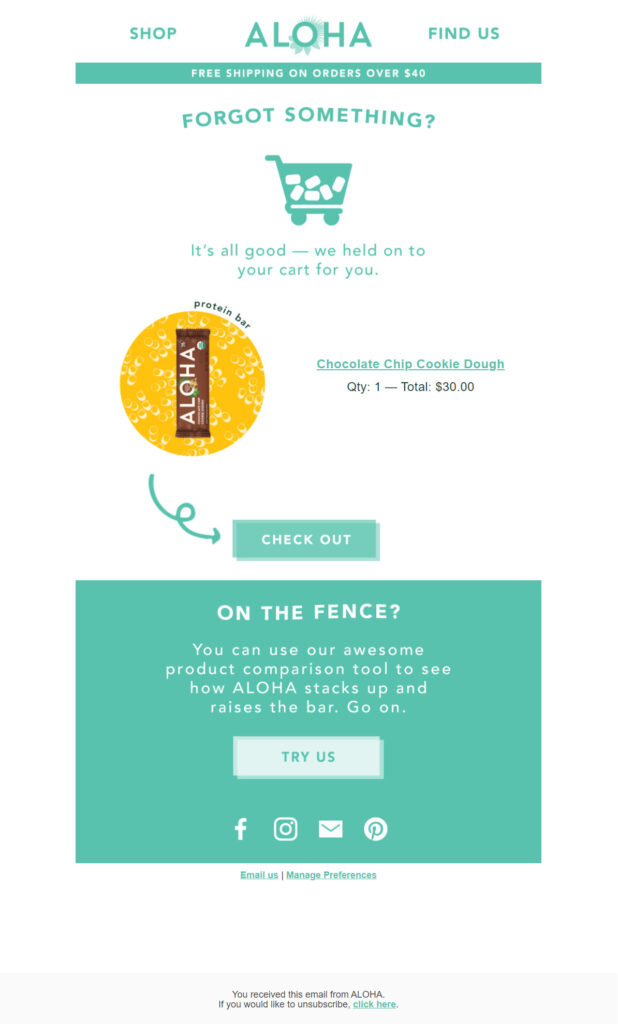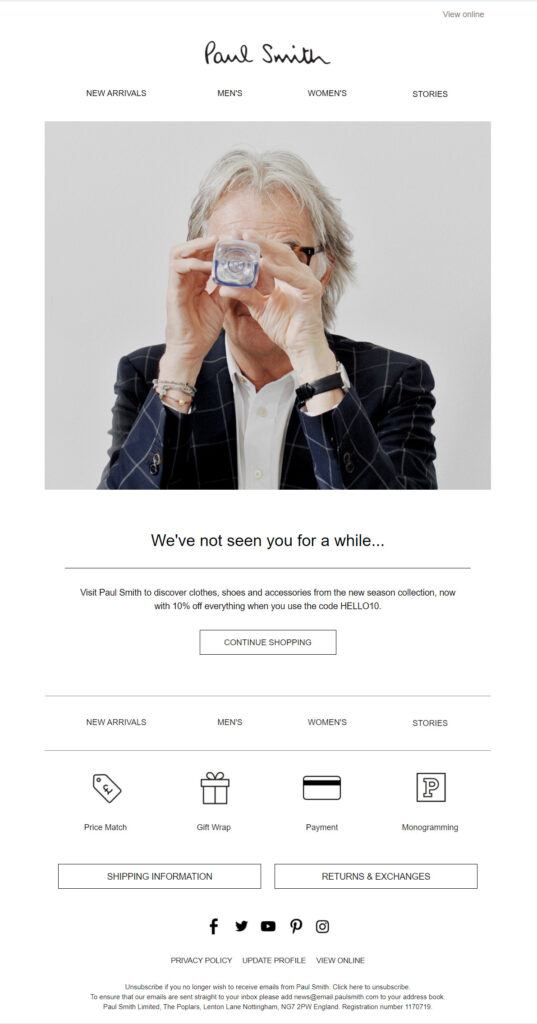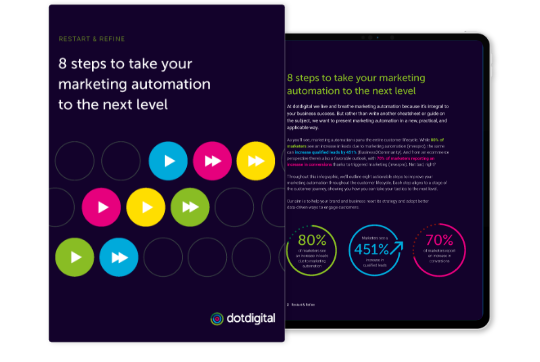Marketing automation: how to start automating emails


Marketing automation improves productivity by 20% and can lead to an average increase of 451% in qualified leads. How? Because marketing automation eliminates repetitive tasks and allows you to focus on other parts of your business. While your automation programs are getting the right message to the right people, you and your team can be creating new and exciting marketing campaigns.
Automation can take many forms. For example, Hootsuite is an example of an automation platform. Instead of manually posting every tweet, update, and post for your brand, you can build them all at the beginning of the month to run. This leaves you free to focus on other tasks and campaigns that require your attention.
What is email marketing automation?
Email marketing automation works in the same way. Rather than manually building every email campaign over and over again for every targeted segment, automation takes one campaign template and sends it to the right people at the right stage of their journey.
Automating your email marketing makes it easier to execute personalized and contextual campaigns with minimal effort. It eliminates time-consuming tasks such and building email lists and personalizing content by pulling in your existing customer data.
When you integrate your marketing automation platform with your CRM or ecommerce store, you will have even more data and insights to create relevant campaigns that deliver real results.
What are the benefits of automating your email marketing?
Saving you from manual, repetitive tasks hasn’t got you convinced about marketing automation? Well, here are our top four benefits of automating your email marketing:
1. Engage new customers
An email automation program is an easy and effective way to make a good first impression with new customers.
Welcome programs one of the highest revenue-generating automations available to marketers. It enables you to reach out and engage with your newest subscribers as soon as they sign up.
You can also cultivate long-lasting and powerful relationships with email subscribers by sending them educations or onboarding content. This will help them get to know your brand while seeing the clear benefits you offer over your competitors.

2. Drive more conversions
Unlike one-time sends, email automations are triggered when customers and prospects complete a pre-set action. They are centered around your workflow – that is, the actions you want the customer to take. It’s like a blueprint. Your email automation will deliver relevant messages and calls to action that will drive the recipient towards conversion.
Abandoned cart emails are a perfect example of automation programs that directly drive conversions. Landing in a shopper’s inbox shortly after they leave your website reminds them about what they left behind and encourages them to return to your ecommerce store.

Similarly, abandoned browse programs target customers who have left a high-intent page without completing your desired action. For example, this could be your pricing page or a new product page, reaching out to a customer at this point can help remove some of the blockages on the path to purchase.
3. Boost customer loyalty
Customer retention is essential for the growth of your business. As well as being more cost-efficient than acquiring new customers, customers who have shopped with you before can spend 60% more. All businesses expect a certain percentage of list decay every year, but keeping this to a minimum ensures your constantly scaling up.
Loyalty programs, birthday, and anniversary automations are a great way to make customers feel valued and keep them engaged for longer. Thanking them for their businesses or rewarding them for their business gives them a reason to shop with you again in the future.

4. Re-engage lapsed leads
Marketing automation is a powerful tool that can target customers at any stage of their journey. By choosing criteria such as ‘last open’ you can trigger prompts and promotions to drive customers back to your brand.
Without automation, re-engagement and win-back campaigns would be time-consuming and difficult to set up. However, setting up a program is simple and guaranteed to drive action. They also have the capability to personalize content for you, meaning your automation program can send the perfect message to drive engagement using nothing more than your customer insights.

How to get started with marketing automation
So, you’re no longer asking yourself “what is email marketing“. You’re ready to take the next step in your digital marketing journey and it’s time to get started with marketing automation. Whether you’re building an automation program from scratch or using one of Dotdigital’s intelligent, pre-built templates you’ll need to think about the following before you get started.
1. Connect your data
Data is at the core of your marketing automation. Customer actions, data, and insights are what determine what message goes out when and to who it goes.
That means the more data your automation platform has, the better the program you can build. And that means integrating it with your CRM or ecommerce platform. By doing this, you can begin to roll out more advanced automation programs, such as abandoned cart and lead nurture campaigns.
2. Identify your goal
Knowing what you want to achieve before building your automation will help you tenfold in the future. It’ll help you pick the right program, know what metrics to track, and how to measure the program’s success. Some goals may require customers to take more than one action or for you to send more than one email. It’ll even help you to determine who should receive your messages.
With a clear goal in mind, you’ll easily be able to identify the steps you need to take to achieve the results you want.
3. Select your target audience
Not every campaign is going to work with every member of your audience. Certain campaigns will work better with specific audience groups. For example, an educational nurture program may target relatively new subscribers. Therefore, you would set your program enrollment criteria to be subscribers who joined within the last two weeks.
Alternatively, if you’re launching a pre-sale event for loyal, high-spender customers, you can add this audience segment to your campaign. With a clear goal in mind, identifying your target audience is simple.
4. Choose your trigger
What customer action are you tracking that will trigger your automation program?
For a welcome program, that would be the point of subscription. An abandoned browse program is trigger when a user leaves your website with items still in their shopping cart.
Or perhaps you’re going to base it on time. Your trigger can be based on how long someone has been subscribed or the month of the year if you’re sending a birthday or anniversary campaign.
5. Determine your actions
Some automation programs are going to be more complex than others. The best thing about email marketing automation programs is that you can plan whole journeys in advance.
Think about actions like time delays, re-sends for unopened emails, and branching depending on the customer’s behavior. These are particularly helpful when you’re planning longer journeys around events or product launches.
6. Create your assets
Once you’ve decided on the actions of your program, you’ll know how many emails are going to be sent. Now it’s time to get designing.
You’ll need to design and build all your templates before you go live with your program. Be sure to include personalized elements in the body copy, subject lines, or images for added impact.
7. Set up a test group
While it’s not possible to traditionally test automated emails in the way email marketers are used to, it is still possible. To do so, you should set up a test group with email addresses using various providers and open them on multiple devices.
This will help you identify any problems in your send settings, enrollment criteria, or triggers. Testing is essential to the success of your campaigns. A poorly delivered email has the power to damage your customer’s engagement, so work out any kinks beforehand.
8. Go live
After you’ve successfully tested your new program, it’s time to go live!
But that’s not to say you can ‘set and forget’. Keep track of campaigns in your automation reports. This will help you see what campaigns are working and which need to be optimized.
Ready to take your marketing automation to the next level?
For an in-depth look at how to develop and advance your marketing automation strategy, check out our latest guide to help you take things to the next level.




